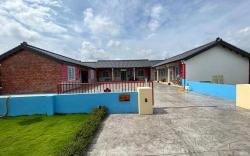Beidou Dian'an Temple Introduction
Beidou Dian'an Temple, along with Changhua Nanyao Temple and Lukang Tianhou Temple, is known as one of the three major Mazu temples in Changhua County. The temple originated as the Tianhou Temple on Dongluo Street (the old site is located in Jiumei Village, Xizhou Township), established during the Kangxi period, making it the oldest Mazu temple in southern Changhua. However, in the 11th year of the Jiaqing period (1806), due to flooding and warfare, Dongluo Street was devastated, leading to a mass migration of residents to "Baodou" and the reconstruction of the Tianhou Temple, which embodies the meaning of "establishing residence and settling the people." The Tianhou Temple is also referred to as Dian'an Temple. During the Qing Dynasty, Beidou Street was the most prosperous area in the southern Changhua region, allowing Dian'an Temple to develop a large network of faith that encompasses present-day Beidou Township and parts of Xizhou, Tianwei, and Pitou, with influence extending to Tianzhong Township and Ershui Township. The old temple of Beidou Dian'an was designated as a national third-level heritage site in the 72nd year of the Republic of China. However, due to years of neglect and in preparation for the construction of the front hall, it was relocated to the Taiwan Folk Village, followed by an expansion of the front hall, and in the 92nd year of the Republic of China, it was consecrated. The five soft-bodied Mazu statues from the Qing Dynasty and the millennium-old red cypress Bodhisattva statue are important historical artifacts. (Source: Hsieh Ruilong, "Beidou Local Chronicle")







































